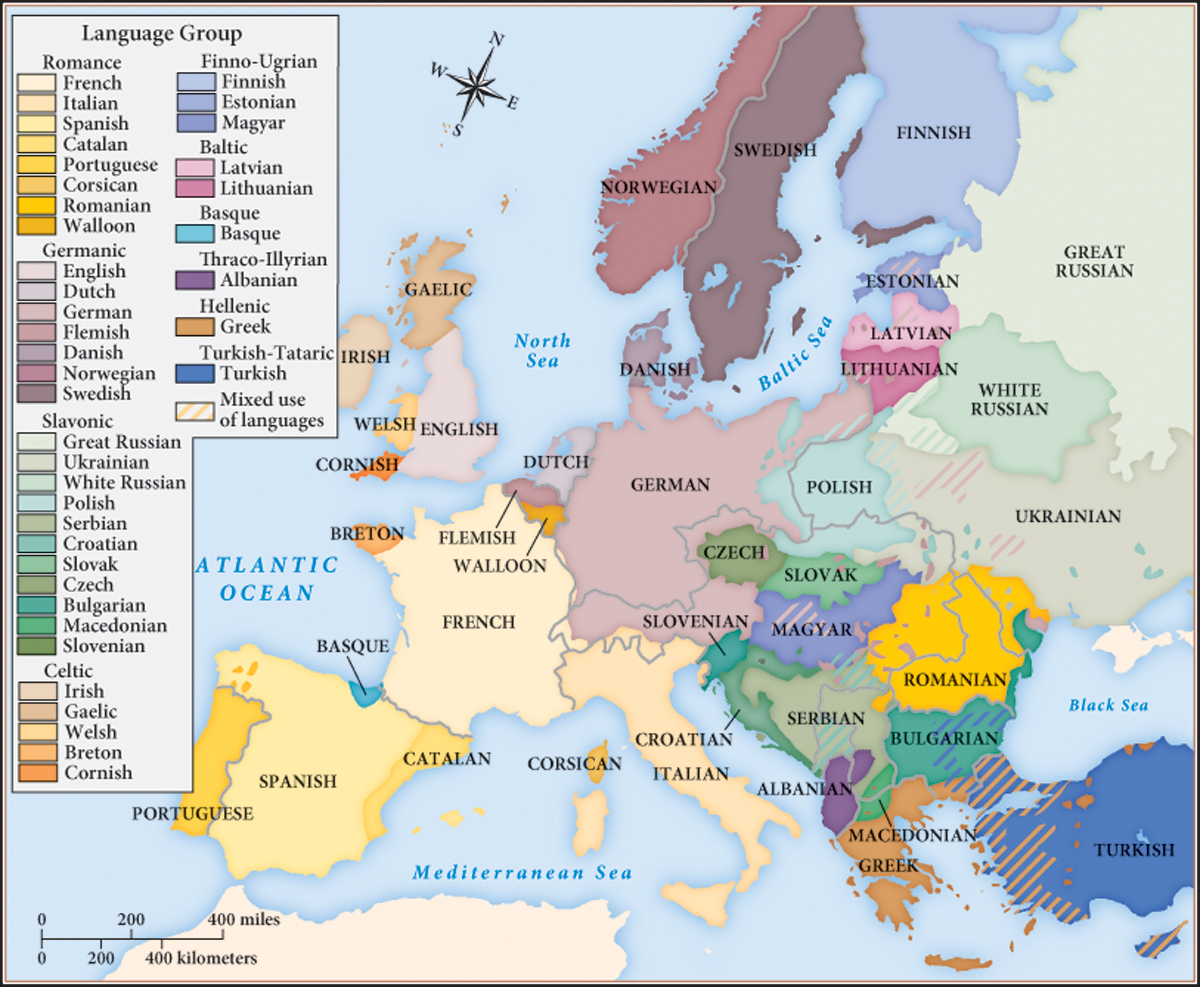The Spell of Nationalism
The Spell of Nationalism
According to the doctrine of nationalism, all peoples derive their identities from their nations, which are defined by common language, shared cultural traditions, and sometimes religion. When such nations do not coincide with state boundaries, nationalism can produce violence and warfare as different national groups compete for control over territory (Map 21.3).

Nationalist aspirations were especially explosive for the Austrian Empire, which included a variety of peoples united only by their enforced allegiance to the Habsburg emperor. The empire included three main national groups: the Germans, who made up one-fourth of the population; the Magyars of Hungary (which included Transylvania and Croatia); and the Slavs, who together formed the largest group in the population but were divided into different ethnic groups such as Poles, Czechs, Croats, and Serbs. The Austrian Empire also included Italians in Lombardy and Venetia, and Romanians in Transylvania. Efforts to govern such diverse peoples preoccupied Prince Klemens von Metternich, chief minister to the weak Habsburg emperor Francis I (r. 1792–1835). Metternich’s domestic policy aimed to restrain nationalist impulses, and it largely succeeded until the 1840s. He set up a secret police organization on the Napoleonic model that opened letters of even the highest officials. Metternich’s policies forced the leading Italian nationalist, Giuseppe Mazzini (1805–1872), into exile in France in 1831. There Mazzini founded Young Italy, a secret society that attracted thousands with its message that Italy would touch off a European-wide revolutionary movement. The conservative order throughout Europe felt threatened by Mazzini’s charismatic leadership and conspiratorial scheming, but he lacked both European allies against Austria and widespread support among the Italian masses.
Austria was deliberately excluded when the German states formed a Zollverein (“customs union”) in 1834, under Prussian leadership. German nationalists sought a government uniting German-speaking peoples, but they could not agree on its boundaries: Would the unified German state include both Prussia and the Austrian Empire? If it included Austria, what about the non-German territories of the Austrian Empire? And could the powerful, conservative kingdom of Prussia coexist in a unified German state with other, more liberal but smaller states? These questions would vex German history for decades to come.
Polish nationalism revived after the collapse of the revolt in 1830 against Russian domination. It found its most ringing voice in the poet Adam Mickiewicz (1798–1855), whose mystical writings portrayed the Polish exiles as martyrs of a crucified nation with an international Christian mission. Mickiewicz formed the Polish Legion to fight for national restoration, but rivalries and divisions prevented united action until 1846, when Polish exiles in Paris tried to launch a coordinated insurrection for Polish independence. Plans for an uprising in the Polish province of Galicia in the Austrian Empire collapsed when peasants instead revolted against their noble Polish masters.
In Russia, nationalism took the form of opposition to Western ideas. Russian nationalists, or Slavophiles (lovers of the Slavs), opposed the Westernizers, who wanted Russia to follow Western models of industrial development and constitutional government. The Slavophiles favored maintaining rural traditions infused by the values of the Russian Orthodox church. Only a return to Russia’s basic historical principles, they argued, could protect the country against the corrosion of rationalism and materialism. The conflict between Slavophiles and Westernizers has continued to shape Russian cultural and intellectual life to the present day.
The most significant nationalist movement in western Europe could be found in Ireland. The Irish had struggled for centuries against English occupation, but Irish nationalists developed strong organizations only in the 1840s. In 1842, a group of writers founded the Young Ireland movement, which aimed to recover Irish traditions and preserve the Gaelic language (spoken by at least one-third of the peasantry). Daniel O’Connell (1775–1847), a Catholic lawyer and landowner who sat in the British House of Commons, hoped to force the British Parliament to repeal the Act of Union of 1801, which had made Ireland part of Great Britain. In 1843, London newspapers reported “monster meetings” that drew crowds of as many as 300,000 people in support of repeal of the union. In response, the British government arrested O’Connell and convicted him of conspiracy.